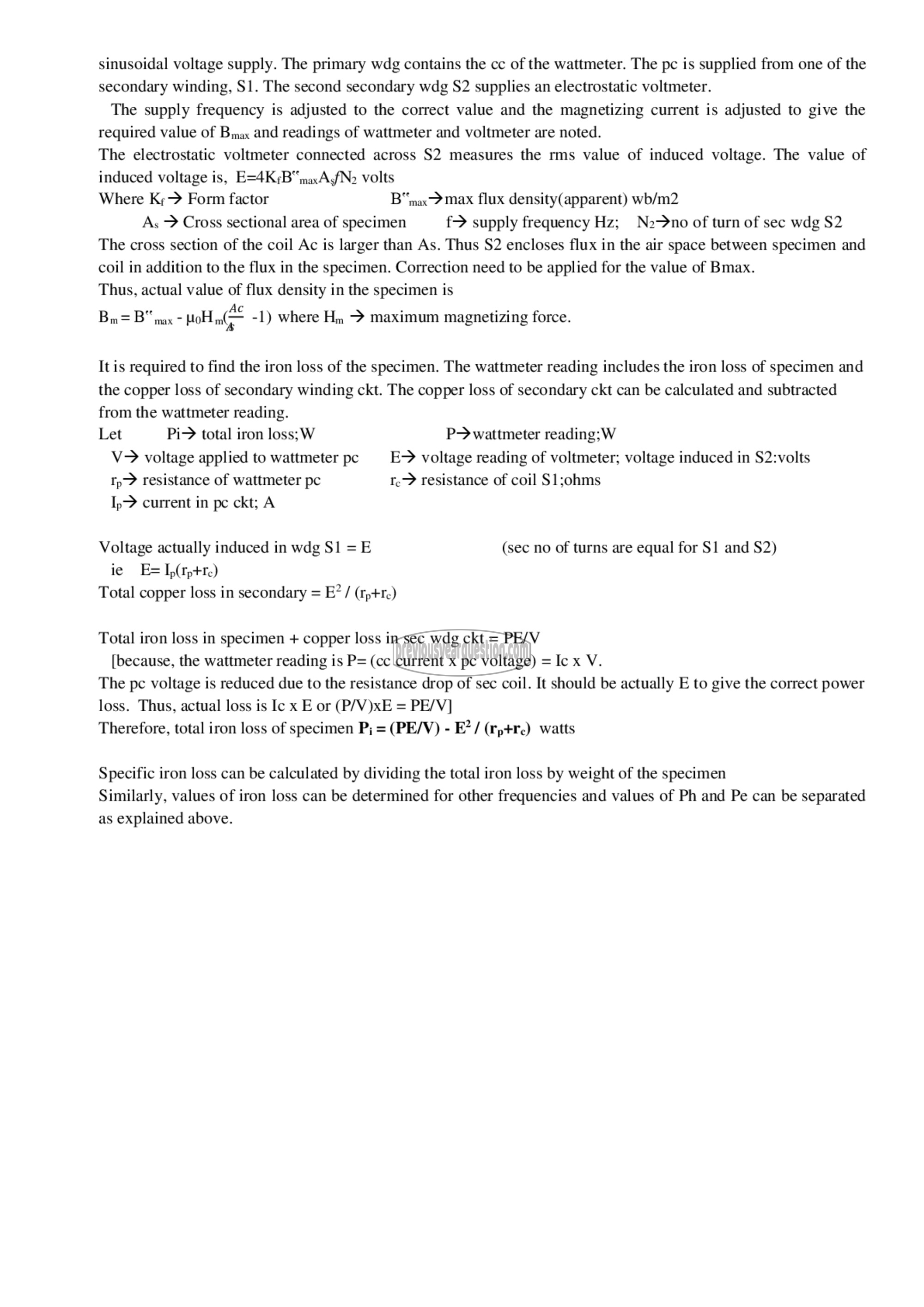APJ ABDUL KALAM TECHNOLOGICAL UNIVERSITY Previous Years Question Paper & Answer
Semester : SEMESTER 4
Subject : Measurements and Instrumentation
Year : 2018
Term : MARCH
Scheme : 2015 Full Time
Course Code : EE 208
Page:17
sinusoidal voltage supply. The primary wdg contains the cc of the wattmeter. The عم is supplied from one of the
secondary winding, 51. The second secondary wdg 52 supplies an electrostatic voltmeter.
The supply frequency is adjusted to the correct value and the magnetizing current is adjusted to give the
required value of Bmax and readings of wattmeter and voltmeter are noted.
The electrostatic voltmeter connected across 52 measures the rms value of induced voltage. The value of
induced voltage is, E=4KsB“naxAgN2 volts
Where 162 Form factor Bmax max flux density(apparent) wb/m2
As > Cross sectional area of specimen جا supply frequency Hz; N2 no of turn of sec wdg 2
The cross section of the coil Ac is larger than As. Thus S2 encloses flux in the air space between specimen and
coil in addition to the flux in the specimen. Correction need to be applied for the value of Bmax.
Thus, actual value of flux density in the specimen is
പാ ظ8 max - HoH ae -1) where प्रा > maximum magnetizing force.
It is required to find the iron loss of the specimen. The wattmeter reading includes the iron loss of specimen and
the copper loss of secondary winding ckt. The copper loss of secondary ckt can be calculated and subtracted
from the wattmeter reading.
Let Pi> total iron loss;W P>wattmeter reading;W
५-2 voltage applied to wattmeter عم E> voltage reading of voltmeter; voltage induced in S2:volts
Ip resistance of wattmeter pc Te> resistance of coil S1;ohms
1൭ current in pe लत; A
Voltage actually induced in wdg 51 = E (sec no of turns are equal for ൭1 and 52)
ie [= (णार)
Total copper loss in secondary = E?/ (rp+re)
Total iron loss in specimen + copper loss in sec wdg ckt = PE/V
[because, the wattmeter reading is P= (cc current x pce voltage) = Ic x V.
The pc voltage is reduced due to the resistance drop of sec coil. It should be actually E to give the correct power
loss. Thus, actual loss is Ic x E or (P/V)xE = PE/V]
Therefore, total iron loss of specimen ए = (PE/V) - E?/ ൩൦൦) watts
Specific iron loss can be calculated by dividing the total iron loss by weight of the specimen
Similarly, values of iron loss can be determined for other frequencies and values of Ph and Pe can be separated
as explained above.
